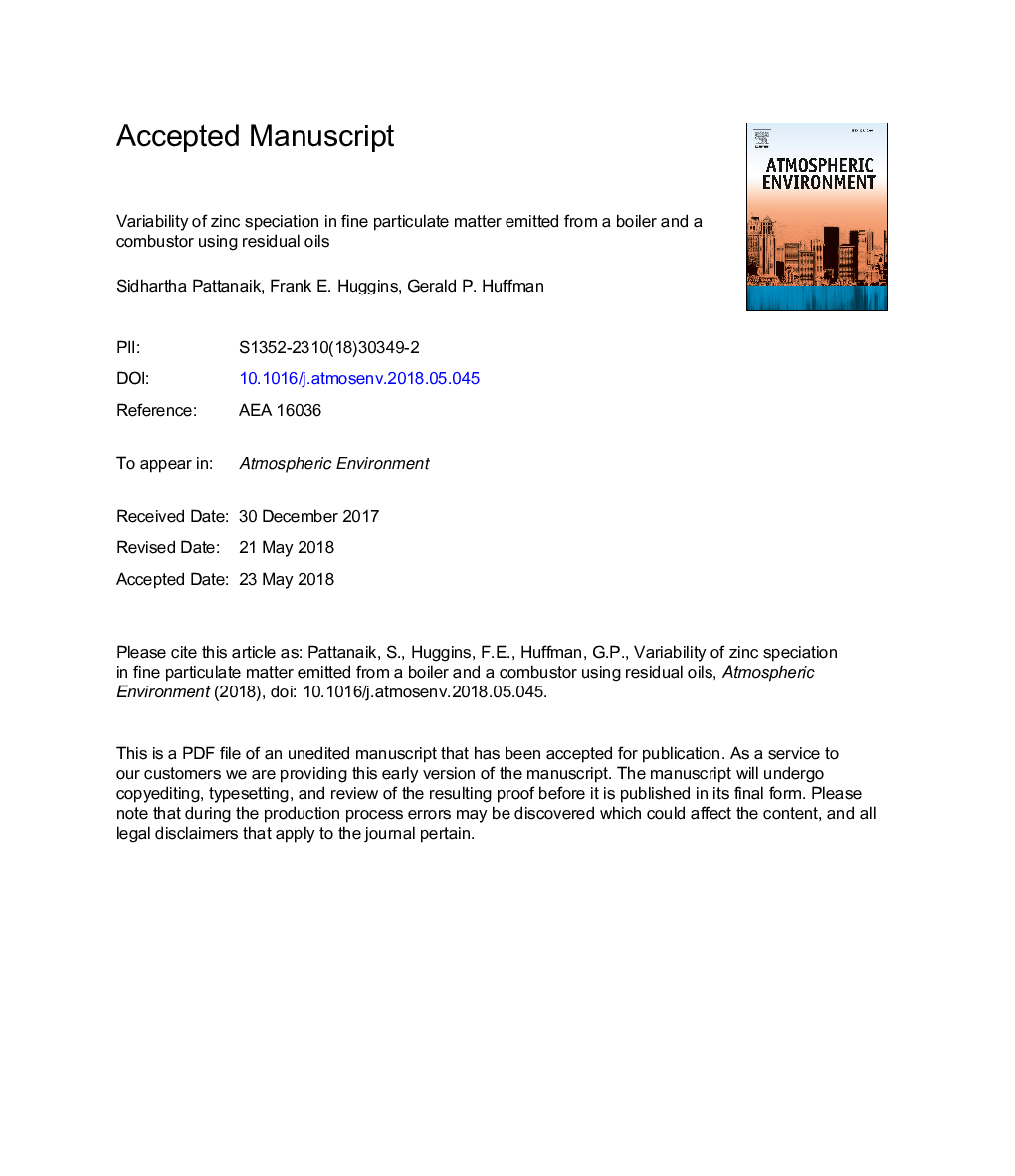| Article ID | Journal | Published Year | Pages | File Type |
|---|---|---|---|---|
| 8863585 | Atmospheric Environment | 2018 | 26 Pages |
Abstract
Zinc emission into the atmosphere from residual oil combustion is of significant concern due to its higher concentration, solubility and bioavailability. Exposure to zinc laden residual oil fly ash fine particulate matter with aerodynamic diameter â¤2.5â¯Î¼m (ROFA PM2.5) induces pulmonary and cardiac effects. These effects are closely linked to the concentration and bonding environment of zinc in ROFA PM2.5. Four ROFA PM2.5 samples were prepared in a 732â¯kW practical fire tube boiler (FTB) by burning one No. 5 and three No. 6 residual oil(s) of varying sulfur and ash contents. For comparison, one ROFA PM2.5 sample was prepared in a 82â¯kW small refractory line combustor (RLC) by burning one of the No. 6 oils. The X-ray absorption spectroscopy data of FTB PM2.5 samples reveal that zinc sulfate hydrate (ZnSO4.7H2O) is the dominant zinc form, with the remainder Zn in zinc phosphate hydrate (Zn3(PO4)2.4H2O) form. Following dissolution of zinc sulfate from FTB PM2.5, a minor Zn-sorbed ferrihydrite form was detected in the residue. In the RLC PM2.5, zinc phosphate hydrate is predominant. The study shows that zinc solubility is dependent on its speciation, grade and composition of oils, combustion condition, and mode of Zn incorporation into particle's carbonaceous matrix. Speciation data provide valuable input to source attribution and health effect studies, and establish a link between the two.
Related Topics
Physical Sciences and Engineering
Earth and Planetary Sciences
Atmospheric Science
Authors
Sidhartha Pattanaik, Frank E. Huggins, Gerald P. Huffman,
